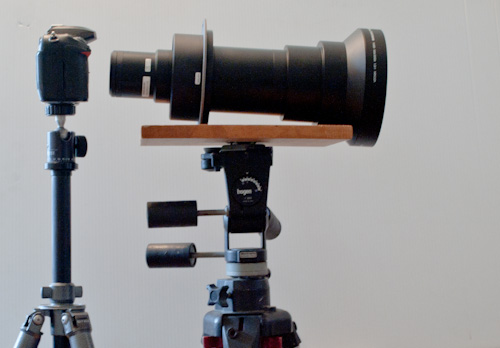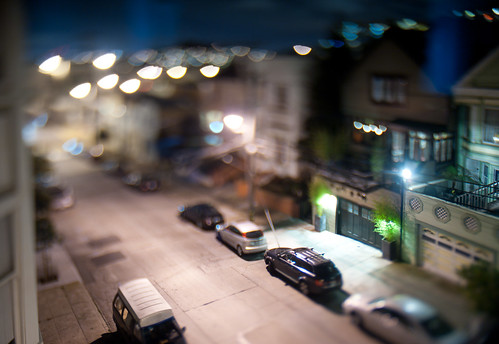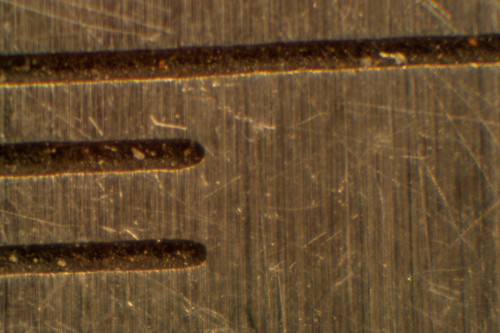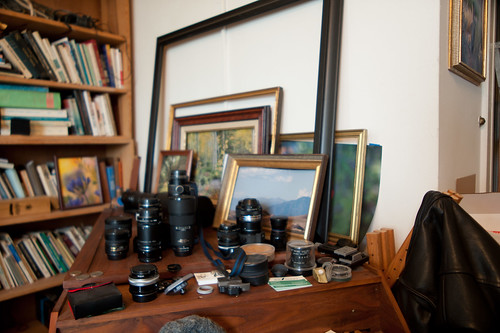
It's a wide angle, about 20mm* but preposterously large and complex. Does anyone have any ideas why it's such a mammoth beast or what use I can apply it to?
[*20mm corrected from 26mm as originally posted]
It does make a nice focus-tilt lens for crop frame DLRs but is (as I said already) preposterously large. I guess the design is guided by a need for extra back-focus distance given the projection technology but I'm still kind of befuddled. It appears to be only about f/2.8 but the front element is about 142mm diameter.
I hoped maybe I could disassemble it and have fun as it has a bunch of hex-wrench slots up and down the body but those didn't seem to loosen up much that I could determine.
I thought maybe it's telecentric on the back side but no, the image circle tapers down from almost 2 inches (45mm) to less than a full frame 35mm sensor, more like a crop frame DSLR frame, which is 28mm diameter.
There is no aperture, as it's designed for a single use; projecting to a flat screen. Presumably it's got excellent flat field properties. Perhaps that's a reason for the design.
Ideas... maybe figuring out the pivot point would help with panoramas or determining the exact focal length... or figuring out where to put an aperture stop...
Sorry if this is not a macro lens but this is the best place I know to get lens knowledge. As best I can tell from comparable models, this thing is good for projecting a 1-inch subject (1-inch diameter (0.91 or 0.95-inch) video tube?) with room for perspective shift?) rated for a projection size between about 5 feet wide and about 40 feet wide... they typically have another lens design suitable for closer focus, for rear projection at smaller sizes than that. I haven't tried it much at closer distances but it should be good for focus stacked landscapes up to reasonably close focus.
Basically any thoughts about it (or similar) would be appreciated.
My best guess at a exciting use is to remove some of the camera-side elements and maybe have a less corrected but super-fast wide angle lens with some interesting properties. So any ideas about disassembly would be appreciated as well.






